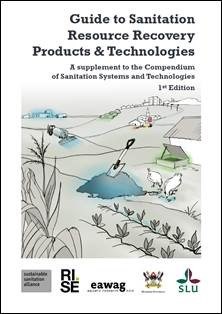Contact
Department of Energy and Technology, Environmental Engineering

The world is currently undergoing a paradigm shift towards a circular society in which resources are recovered and reused rather than discarded. The global population has surpassed seven billion people, and rapid urbanisation in many areas is putting a significant strain on our ability to provide basic services to all.
The Sustainable Development Goals highlight the fact that millions still lack access to food, healthcare, water and sanitation. At the same time, it is increasingly evident that we are consuming the Earth’s resources and releasing waste into the environment in an unsustainable manner. The resulting effects on climate change, biodiversity loss and changing nutrient cycles threaten to over-step critical planetary boundaries.
Crossing these boundaries has the potential to cause irreversible environmental change and to threaten the ability of humanity to develop and thrive. Sanitation systems manage carbon, nutrient and water flows, which are key resource flows that affect the planetary boundaries and thus should be recovered and recirculated instead of being released into the environment. Increasing resource recovery within our sanitation systems can play a critical role in shifting to a more sustainable society.
There are significant resources within excreta and wastewater fractions that can be recovered and turned into useful products. For example, the average person excretes 4.5 kg of nitrogen, 0.5 kg of phosphorus and 1.2 kg of potassium every year. These elements and other micronutrients found in excreta are critical for the fertilising and restoration of agricultural soils. The energy value of faeces is on average 4 115 kcal/kg of dry solids. This energy can be utilised as a renewable energy source. On top of this, there are large volumes of wastewater that can be captured, cleaned and reused. However, human excreta and wastewater contain pathogens and other undesired substances, risks that need to be managed in a reuse system. The growing demand for recycling needs to be complemented with a growing knowledge of how to do it safely.
The aim of this document is to provide an overview of the possibilities for resource recovery from sanitation and provide guidance on treatment processes to achieve safe products for reuse. The focus of this document is on resource recovery from the organic wastes managed in sanitation systems and, to a lesser extent, on the recovery of water and energy generation. Resource recovery sanitation systems are defined as systems that safely recycle excreta and organic waste while minimising the use of non-renewable resources such as water and chemicals. Safe recycling means that waste flows are managed so that physical, microbial and chemical risks are minimised. Thus, the recycled product should not pose any significant health threat or environmental impact when correctly used.
The specific objectives of this document are:
McConville, J., Niwagaba, C., Nordin, A., Ahlström, M., Namboozo, V. and Kiffe, M. (2020). Guide to Sanitation Resource-Recovery Products & Technologies: A supplement to the Compendium of Sanitation Systems and Technologies. 1st Edition. Swedish University of Agricultural Sciences (SLU), Department of Energy and Technology, Uppsala, Sweden.